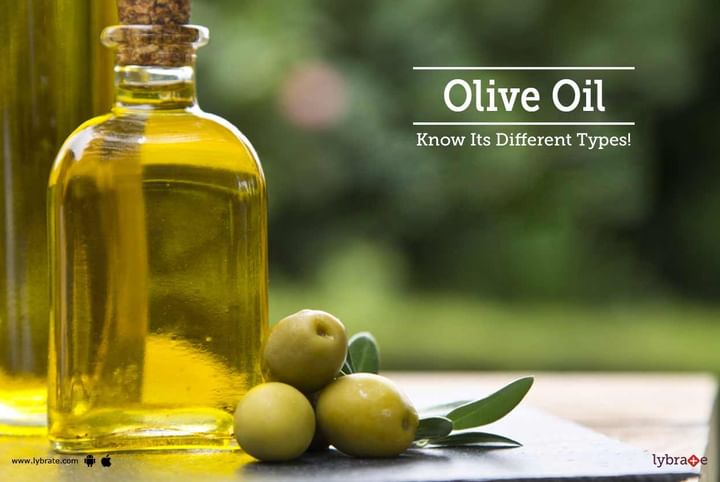Olive Oil - Know Its Different Types!
Today, olive oil is known as one of the healthiest oils for cooking food because of its low level of saturated fats. Olive oil is also said to be able to aid in weight loss, reduce cholesterol, lower the risk of cardiovascular diseases, slow down the ageing process and protect against certain types of cancer. However, not all types of olive oil are the same. Olive oil is extracted by crushing olives and is categorised on the basis of the type of pressing, acidity levels and extent of processing undergone.
Some of the common types of olive oil available are:
- Extra virgin olive oil: This refers to oil produced by the first ‘pressing’ of olives. This oil is extracted using only mechanical or other physical means and does not involve the use of heat or chemicals. The only processing is subjected to is washing, decanting, centrifuging and filtering. The maximum acidity level of this oil is 0.8%. Extra virgin olive oil has no added flavours or aroma and is said to have a superior taste.
- Virgin olive oil: This is the second grade of olive oil. It has slightly higher level of acidity than extra virgin olive oil. It may seem to have a slight flavour imperfection as compared to the earlier oil. This is most commonly used type of olive oil.
- Refined olive oil: Oil that is produced by subsequent pressings of the remaining olive flesh is known as refined olive oil. It has a lighter colour and is less viscous as compared to virgin olive oil. Unlike virgin olive oil, refined olive oil is bleached and deodorised. It may also be mixed with a little virgin olive oil. This type of oil has the same levels of monosaturated fat, but has very little antioxidants. It can be used for most of the preparation methods like stir fry, saute, light cooking, etc.
- Olive pomace oil: The crushed flesh and pits left over from the extraction of olive oil is known as pomace. This may further be used to extract oil known as pomace oil. Pomace oil is an inferior oil that may be mixed with olive oil to improve its taste and texture. It can be used for deep frying
- Unfiltered olive oil: As the name suggests, the unfiltered olive oil contains bits of olive flesh. While this may enhance the flavour of the oil, it also causes a sediment to be formed at the bottom of the bottle. This sediment may become rancid over time and lower the shelf life of the oil. Unfiltered olive oil should ideally be used within 6 months of being bottled.
Apart from the above, there are a number of other types of olive oil such as early or late harvest olive oil, hand picked olive oil, single estate olive oil and flavoured oil. Olive pomace oil, however, is considered best for Indian style of cooking as it has high smoking point.



+1.svg)
